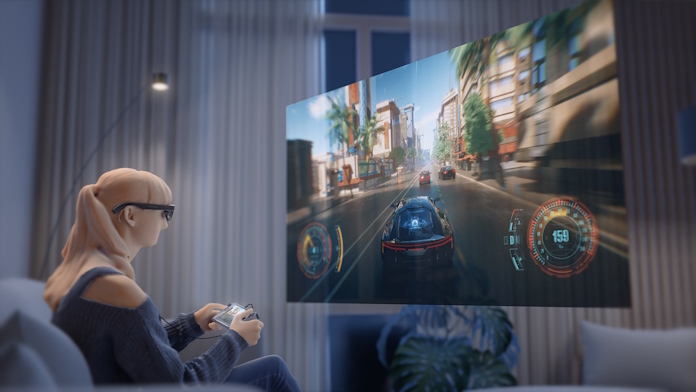Asus AirVision M1

The Asus AirVision M1 may sound like a competitor to the Apple Vision Pro, but it's not a mixed reality device. Instead, it is a portable display that is equipped with FHD Micro OLED display technology and requires a connected computer or phone. With a proper connection, this high-tech glasses can generate multiple virtual screens, allowing users to do many things in a limited area.

Asus has presented a good number of display products at CES 2024. Among them is the Asus AirVision M1, which is a display for your face. It's a pair of glasses that contain Micro OLED screen technology and can only display content when you connect it to a computer or phone. This automatically means that it is not a competitor to the Apple Vision Pro or the recently revealed Sony Spatial XR headset.
But it certainly competes against products like the TCL NXTWear S and the RayNeo Air 2. However, the AirVision M1 comes with some interesting features that make the glasses a bit unique. At its core, the Asus AirVision M1 comes with a 1080p display with a 57-degree field of view, allowing it to offer a substantial display right in front of your eyes. Like the NXTWear glasses, this pair has built-in speakers and relies on a DisplayPort connection over USB Type-C to display content.

Like the competing NXTWear glasses, the Asus AirVision M1 has built-in speakers, allowing the user to listen to audio directly from the glasses. The DisplayPort connection over USB Type-C makes it easy to connect and display content from a variety of sources. It is these features that make the Asus AirVision M1 an exciting new product in portable display technology. With the ability to generate multiple virtual screens in a limited space, this pair of glasses is an innovative tool that can transform the way we use technology, opening up new possibilities for multitasking and productivity.
Latest gadgets
-
19 Sepgadgets
-
23 Maygadgets
LaserPecker LP5 Laser Engraver
-
01 Maygadgets
Swytch launches Swytch Max+ Kit
-
10 Margadgets
DJI AIR 3S
-
03 Margadgets
Razer Wolverine V3 Pro
-
21 Febgadgets
OBSBOT Tiny 2 SE
-
13 Febgadgets
Corsair launches Platform:4
-
17 Jangadgets
Nerdytek Cycon3
Most read gadgets
Latest gadgets
-
19 Sepgadgets
DJI launches Mini 5 Pro
-
23 Maygadgets
LaserPecker LP5 Laser Engraver
-
01 Maygadgets
Swytch launches Swytch Max+ Kit
-
10 Margadgets
DJI AIR 3S
-
03 Margadgets
Razer Wolverine V3 Pro
-
21 Febgadgets
OBSBOT Tiny 2 SE
-
13 Febgadgets
Corsair launches Platform:4
-
17 Jangadgets
Nerdytek Cycon3






